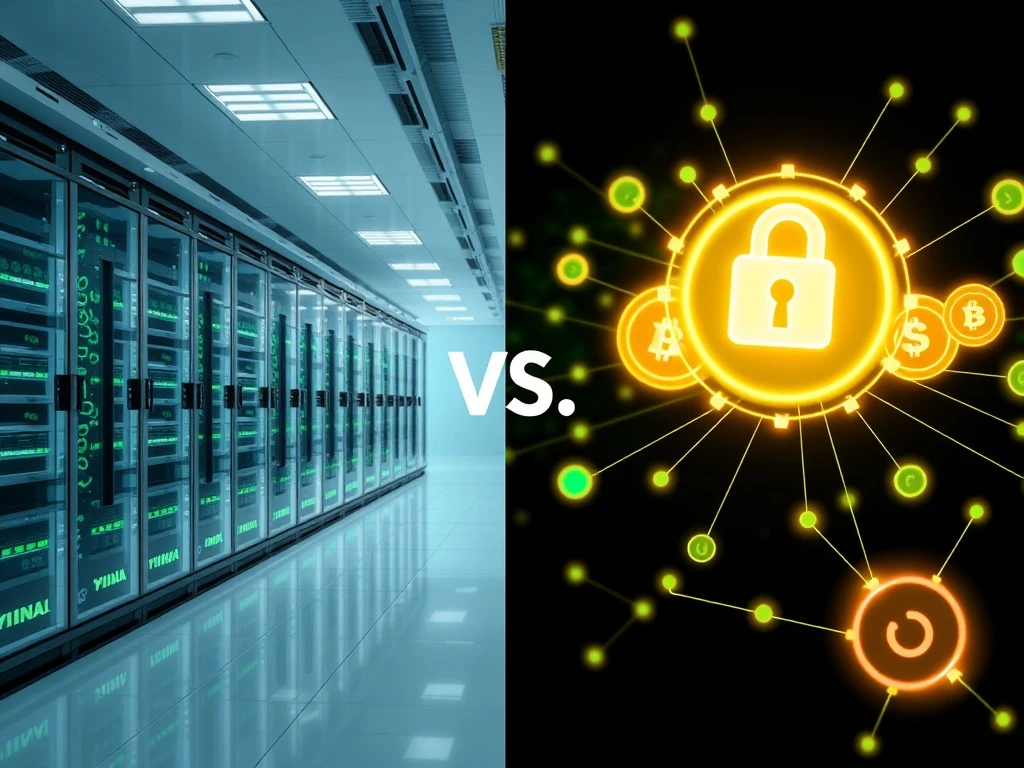Cloud Mining vs Crypto Staking: Which Investment Reigns Supreme in 2025?

Are you searching for effective ways to generate passive crypto income? In 2025, two primary strategies dominate the conversation: cloud mining and crypto staking. Both promise returns, yet they operate on fundamentally different principles. Understanding these differences is crucial for any investor.
Cloud Mining vs Crypto Staking: The Core Differences
Investors often consider cloud mining and crypto staking together for passive income. However, they represent distinct approaches to earning cryptocurrency. Cloud mining involves renting remote Bitcoin mining hardware. Conversely, staking means locking up tokens to validate proof-of-stake networks. Trusted platforms like ECOS or MiningToken show cloud mining ROI averaging 5%-10% APR in 2025. Conversely, riskier schemes, especially those linked to XRP, still promote unrealistic promises of 100%-800% APR. Staking typically offers more stable returns. For instance, Ethereum staking yields about 3% APY. Solana averages 6%-8%, and liquid staking protocols like Marinade reach 10%-12%. This explainer details cloud mining vs crypto staking in 2025. It compares crypto income strategies, real-world profitability, and where investors might find the best balance of returns and risk.
How Cloud Mining Generates Earnings in 2025
Cloud mining allows users to participate in Bitcoin or Ethereum mining. It removes the need to own or operate expensive ASICs. Instead, you purchase contracts from data centers. You effectively rent hash power that mines on your behalf. In return, you receive daily rewards. These rewards come minus service and maintenance fees. Your payout depends on how much BTC or ETH your allocation produces.
In 2025, platforms like MiningToken, ECOS, NiceHash, and IQ Mining lead the market. MiningToken emphasizes Swiss compliance and AI-driven hash allocation. It also sources renewable energy. They offer flexible contracts, some as short as one day. ECOS operates in Armenia’s Free Economic Zone. It combines mining with wallets, ROI calculators, and payouts. Entry-level contracts start at just $50. NiceHash functions as an open hash-power marketplace. Users can buy or sell computing capacity with dynamic pricing. However, it charges about 3% in fees. Typical Bitcoin cloud mining earnings yield 5%-10% APR.
The sector also contains many speculative schemes. XRP-funded offerings often tout 100%-800% APR. These frequently resemble Ponzi setups. While next-gen ASIC efficiency and renewable-powered farms improve margins, centralization risks persist. Environmental impact also remains a concern. These are important factors in any staking vs mining comparison.
Understanding Crypto Staking Profitability in 2025
Proof-of-stake (PoS) has emerged as a leading strategy for passive crypto income in 2025. Staking enables tokenholders to ‘lock’ their crypto. This action supports a network’s security. In return, they earn rewards. Some users manage their own validator nodes. However, most delegate tokens to established validators. They then collect staking rewards, minus a modest commission fee.
Traditionally, staked tokens remain locked for days or weeks. However, liquid staking platforms have revolutionized this. Lido and Marinade now issue derivative tokens like stETH and mSOL. These allow users to maintain liquidity while still earning yield. As of July 29, 2025, crypto staking profitability varies. Ethereum staking offers around 3% APY. Solana typically sits at 6%-7%. Cardano delegators usually see 4%-6%. Cosmos validators can reach up to 18%, or around 6% net via exchanges. NEAR delivers 9%-11%.
Staking payouts are generally steadier compared to the sometimes-volatile cloud mining earnings. Risks certainly remain, including validator downtime and ‘slashing’ penalties. Token price drops also pose a risk. Yet, the industry has matured significantly. For institutions, modern staking-as-a-service providers offer regulated infrastructure. This includes custody, audits, and insurance. Such developments make PoS a credible option when conducting a staking vs mining comparison.
Profit Comparison Matrix: Cloud Mining vs Staking
Let’s compare the potential returns and risks of each method in 2025:
- Cloud Mining: Offers stable 5%–10% APR with low entry barriers. However, it carries platform risks and limited liquidity. Be wary of XRP cloud mining; it presents high risks with unsustainable promises of 100%–800% APR.
- Crypto Staking: Yields 3%–11% APY, depending on the network chosen. It involves moderate risks. Liquid staking improves flexibility with only minor yield trade-offs.
Many Bitcoin mining farms in Iceland utilize natural Arctic air for cooling. This significantly reduces the need for expensive air-conditioning. It also lowers operational costs, enhancing profitability.
Passive Crypto Income in 2025: Investor Profiles
Choosing between cloud mining vs crypto staking in 2025 depends heavily on your investor profile. Different strategies suit different risk tolerances and technical skills.
Beginner and Low-Tech Users
Newcomers seeking passive crypto income with minimal setup often prefer cloud mining. Platforms like MiningToken or ECOS manage all technical aspects. There is no hardware to buy, and no node management is required. They deliver cloud mining earnings of about 5%-10% APR. Nevertheless, caution is vital. XRP-linked contracts advertising 100%-800% APR are frequently associated with scams. Staking through exchanges or liquid staking services provides another simple entry point. Ethereum staking offers around 3%, and Solana around 7%.
High-Risk, High-Yield Seekers
Aggressive investors might pursue speculative XRP cloud-mining returns. However, most such schemes lack transparency. Safer, higher-yield alternatives exist within staking. Delegating to Cosmos, Polkadot, or NEAR validators can bring 15%-20%. This option suits those willing to manage slightly more complex setups.
Institutional and Compliance-Focused Investors
Cloud mining often struggles with standardized audits and custody frameworks. A clear staking vs mining comparison shows staking has advanced significantly here. Vendors now offer KYT/KYB checks, insured custody, and regulator-friendly reporting. This makes PoS a more viable option for institutions.
Sustainability-Oriented Investors
Cloud mining relies on energy-intensive Bitcoin mining. In contrast, staking’s proof-of-stake model is vastly more eco-friendly. It is a clear choice for ESG-minded crypto investing.
Additional Considerations for Staking vs Mining Comparison
Several other factors deserve attention before choosing between staking or cloud mining.
Tax Implications
Rewards from both staking and crypto mining are taxed as ordinary income upon receipt. Subsequent sales may trigger capital gains. In the UK, HMRC increasingly cross-checks exchange and cloud mining earnings data. This helps identify under-reporting, meaning mistakes can lead to penalties.
Market Volatility
All payouts occur in cryptocurrency. A sudden market swing, particularly in speculative XRP-mining setups, can erase fiat gains quickly. This inherent volatility affects both strategies.
Liquidity
Cloud mining often provides daily payouts. However, it typically locks the principal until contracts mature. Staking can involve unbonding delays. Yet, liquid staking tokens offer faster exits. These come with only slightly reduced yields. On Cosmos-based chains, delegators can redelegate without unbonding periods. This allows validator switching without interrupting staking rewards, reducing downtime risk.
Platform Reliability
Always seek transparent, audited providers. Look for clear Service Level Agreements (SLAs) and uptime data. Staking platforms increasingly publish these metrics. Conversely, truly reliable cloud mining operations remain somewhat rare. Ultimately, the decision between staking Ethereum vs. mining Bitcoin, or any staking vs mining comparison, depends on your personal goals. Risk tolerance, sustainability priorities, and trust in providers will shape how you choose to earn crypto in 2025.










